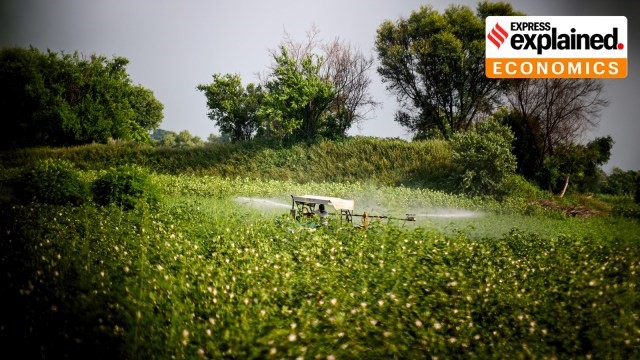India’s Textile Industry

- 08 Mar 2025
Context:
India’s textile and apparel industry is one of the largest globally, contributing significantly to the economy through employment, exports, and industrial output. It accounts for 2.3% of India’s GDP (projected to rise to 5% by 2030), 13% of industrial production, and 12% of total exports. Employing over 4.5 crore people, it is second only to agriculture in job creation. Yet, despite its scale, India lags behind competitors like China, Vietnam, and Bangladesh in global exports.
Current Status and Strengths
India is the world’s second-largest producer of cotton and man-made fibres (MMFs) such as polyester and viscose. Cotton alone engages over 60 lakh farmers, mainly in Gujarat, Maharashtra, and Telangana. The country is also a global leader in jute and technical textiles. The textile and apparel market is projected to reach USD 350 billion by 2030.
FY24 exports stood at USD 35.9 billion, a marginal increase from USD 33.4 billion in FY20. Key destinations include the US, EU, and UAE. Yet, apparel exports have declined from USD 15.5 billion in FY20 to USD 14.5 billion in FY24. While cotton textile exports rose to USD 12.3 billion, growth has remained modest.
Challenges Holding Back the Sector
- Fragmented Supply Chains: India’s textile value chain is highly fragmented, concentrated in MSME clusters with regional specializations (e.g., Tiruppur for knitwear, Surat for polyester). This hampers integration and increases logistics costs. In contrast, competitors operate vertically integrated “fibre-to-fashion” hubs.
- High Raw Material Costs: Quality Control Orders (QCOs) on polyester and viscose restrict cheaper imports. As a result, domestic fibres are significantly costlier—polyester by 33–36% and viscose by 14–16% compared to China.
- Lack of FTAs: Unlike Vietnam and Bangladesh, India lacks preferential trade agreements with major markets like the EU and the US. This undermines price competitiveness and limits market access.
- Regulatory Burden: Complex customs and compliance procedures increase operational costs, particularly for small exporters. In contrast, simplified systems in competing nations reduce red tape.
- Sustainability Pressures: Global markets now demand higher environmental compliance—renewable energy use, water recycling, and traceability. EU regulations (2021–2024) affect 20% of India’s textile exports. MSMEs find it difficult to adapt without financial support.
- Low Per Capita Fibre Consumption: Despite being a major producer, India’s fibre consumption is just 5.5 kg per capita—half the global average.
Way Forward
- Supply Chain Integration: Develop MITRA textile parks and “fibre-to-fashion” hubs to reduce costs and improve efficiency.
- Raw Material Reforms: Reassess QCOs to allow controlled imports and reduce input prices.
- Trade Policy: Secure FTAs with key markets to enhance export competitiveness.
- Labour Productivity: Set up housing near textile clusters (as in China) to improve worker efficiency and reduce attrition.
- Boost MMF Usage: Promote domestic MMF consumption through targeted incentives.
- Green Transition: Provide financial and technical support to MSMEs to adopt sustainable practices and enter the recycled textile market, projected to reach USD 400 million in India.
With structural reforms and global alignment, India’s textile industry holds immense potential to emerge as a global leader while promoting sustainable, inclusive growth.
